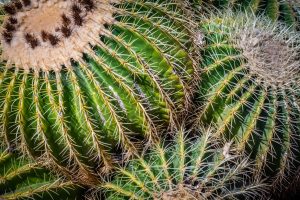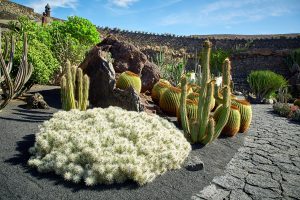Full Sun Succulents In Arizona

Arizona homeowners need to choose the right plants for their landscaping needs in this hot and arid climate. These full sun succulents are best suited to thrive in the valley of the sun.
Top 7 Full Sun Succulents In Arizona
Selecting the best succulents and cacti for this hot region makes the landscape easier to care for and more enjoyable. The full sun succulents listed below continue to thrive in Arizona’s unique and sunny climate.
Agave Americana
The Agave Americana features big yellow flowers when it fully blooms. These can grow about 4 feet in width and 8 feet in height. On average, this succulent will live between 10-30 years.
Barrel Cactus
Multiple variations, such as the golden barrel cactus, are ideal for sunny and hot conditions. These cacti can grow brightly colored flowers throughout the year without expanding too much.
Candelilla
This is a popular full sun succulent since it grows some beautiful pink flowers, featuring waxy straight stems. Landscapers often choose this as a filler plant for full sun.
Hedgehog Cactus
The hedgehog cactus tends to stay smaller than most other succulents, topping out around 1 foot tall. Instead, this cactus enjoys sideway growth, measuring up to 3 feet in width.
Moroccan Mound
The Moroccan mound will give your landscape a uniquely textured plant. Featuring numerous stems, this plant can grow about 5 feet wide in constant sunlight.
Ocotillo
This visually stunning succulent is a great addition to any landscaping project. When Arizona experiences its rare and light rainfall, leaves will appear on the ocotillo, with red flowers blooming in springtime.
Prickly Pear Cactus
Prickly pear cacti will flower between the months of March and June. These prickly pear varieties are synonymous with Arizona landscape designs.
Succulents For Sale In Arizona
If you are interested in increasing the beauty of your landscape by buying desert rocks, stop by our convenient location at 33840 N. Cave Creek Rd., in Cave Creek, give us a call at (480) 488-9455 to schedule a visit to your home.



